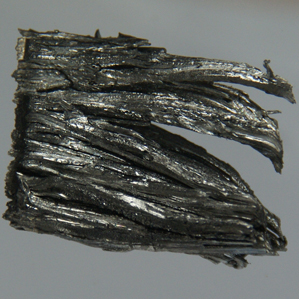What Happened to the Rare-Earths Crisis?
Four years ago, some manufacturers worried that they would run up against a shortage of rare-earth elements, which are used to make wind turbines, certain light bulbs, computers, and many other high-tech products. Rare earths actually aren’t rare, but they are found in low concentrations, attached to minerals from which they must be separated. And most of the facilities designed to mine and separate rare earths are based in China, which limited exports of these materials in 2009 and 2010 (see “The Rare-Earth Crisis”). A 2010 U.S. Department of Energy report envisioned a possible “critical shortage” of five rare earth elements, especially dysprosium—crucial to the permanent magnets used in wind turbines and motors in hybrid or electric cars—between 2012 and 2014. But such worries seemingly dissipated without much fanfare. Why?

Falling prices
Prices for rare earths came down after spiking in mid-2011, and widespread shortages never materialized. That’s largely because the world’s demand for rare earths decreased, says Gareth Hatch, a founder at Technology Metals Research.
Demand appears to have fallen mainly because companies stockpiled these materials in anticipation of shortages, says Hatch. As it turned out, China’s lower export quotas—which were deemed unfair by the World Trade Organization—didn’t constrain the world’s supply, and China recently stopped imposing those limits on rare earths. Hatch notes that while the prices for some rare earth materials remain above 2010 levels and could go up again, a price spike like the one seen in 2011 is unlikely.
Alternative materials
Although the properties of rare earths are hard to mimic, the prospect of shortages led several companies and researchers to find ways to reduce their need for the materials. The U.S. Geological Survey points out that the lighting industry decreased its use of rare earths last year because new light emitting diode (LED) bulbs contain less rare earth material than compact fluorescent bulbs. General Electric tells MIT Technology Review that it expects to significantly cut down on the rare earths it uses in its lighting products, thanks to new materials it has developed to replace them. Siemens appears to be considering technology that eliminates dysprosium in its wind turbines, and Nissan announced in 2012 that it cut the dysprosium in the Leaf electric car’s motor by 40 percent by using a new manufacturing process.
China still in charge
When rare earth prices rose in 2010 and 2011, mines outside of China began to ramp up, including Molycorp’s mine in Mountain Pass, California, which had been dormant for a decade, and Lynas Corporation’s Mount Weld mine in Western Australia. However, decreasing demand and prices for rare earths since the 2011 peak have challenged their businesses in the last few years, as have delays in ramping up production. The British consultancy Roskill estimates that China still produces more than 80 percent of the world’s rare earth elements today. China’s industries also account for 70 percent of global demand for the materials.
The Takeaway:
China’s trade restrictions did not lead to a widespread shortage of the materials. While we see a few examples of companies reducing their use of rare earths in certain products, rare earths continue to be key ingredients in many products.
Do you have a big question? Send suggestions to questionoftheweek@technologyreview.com.
Keep Reading
Most Popular
Large language models can do jaw-dropping things. But nobody knows exactly why.
And that's a problem. Figuring it out is one of the biggest scientific puzzles of our time and a crucial step towards controlling more powerful future models.
How scientists traced a mysterious covid case back to six toilets
When wastewater surveillance turns into a hunt for a single infected individual, the ethics get tricky.
The problem with plug-in hybrids? Their drivers.
Plug-in hybrids are often sold as a transition to EVs, but new data from Europe shows we’re still underestimating the emissions they produce.
Stay connected
Get the latest updates from
MIT Technology Review
Discover special offers, top stories, upcoming events, and more.